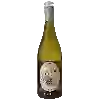
Winery Paul MasValmont Rosé
In the mouth this pink wine is a with a nice freshness.
This wine generally goes well with vegetarian, appetizers and snacks or lean fish.
Taste structure of the Valmont Rosé from the Winery Paul Mas
Light | Bold | |
Dry | Sweet | |
Soft | Acidic |
In the mouth the Valmont Rosé of Winery Paul Mas in the region of Languedoc-Roussillon is a with a nice freshness.
Food and wine pairings with Valmont Rosé
Pairings that work perfectly with Valmont Rosé
Original food and wine pairings with Valmont Rosé
The Valmont Rosé of Winery Paul Mas matches generally quite well with dishes of pasta, vegetarian or appetizers and snacks such as recipes of chinese bowl, zucchini quiche or avocado verrine and quick.
Details and technical informations about Winery Paul Mas's Valmont Rosé.
Discover the grape variety: Gaillard 157
Interspecific crossing carried out in 1891 by Fernand Gaillard (1821-1905) between (triumph x eumelan) and 1 Seibel. This direct-producing hybrid was multiplied in particular in the south-west and centre-west of France as well as in the departments of the Rhône valley and the Ain.
Informations about the Winery Paul Mas
The Winery Paul Mas is one of of the world's great estates. It offers 133 wines for sale in the of Languedoc to come and discover on site or to buy online.
The wine region of Languedoc
Languedoc (formerly Coteaux du Languedoc) is a key appellation used in the Languedoc-Roussillon wine region of southern France. It covers Dry table wines of all three colors (red, white and rosé) from the entire region, but leaves Sweet and Sparkling wines to other more specialized appellations. About 75% of all Languedoc wines are red, with the remaining 25% split roughly down the middle between whites and rosés. The appellation covers most of the Languedoc region and almost a third of all the vineyards in France.
The wine region of Languedoc-Roussillon
Languedoc (formerly Coteaux du Languedoc) is a key appellation used in the Languedoc-Roussillon wine region of southern France. It covers Dry table wines of all three colors (red, white and rosé) from the entire region, but leaves Sweet and Sparkling wines to other more specialized appellations. About 75% of all Languedoc wines are red, with the remaining 25% split roughly down the middle between whites and rosés. The appellation covers most of the Languedoc region and almost a third of all the vineyards in France.
The word of the wine: Roast (taste of)
Characteristic taste of wines made from grapes affected by botrytis cinerea.














